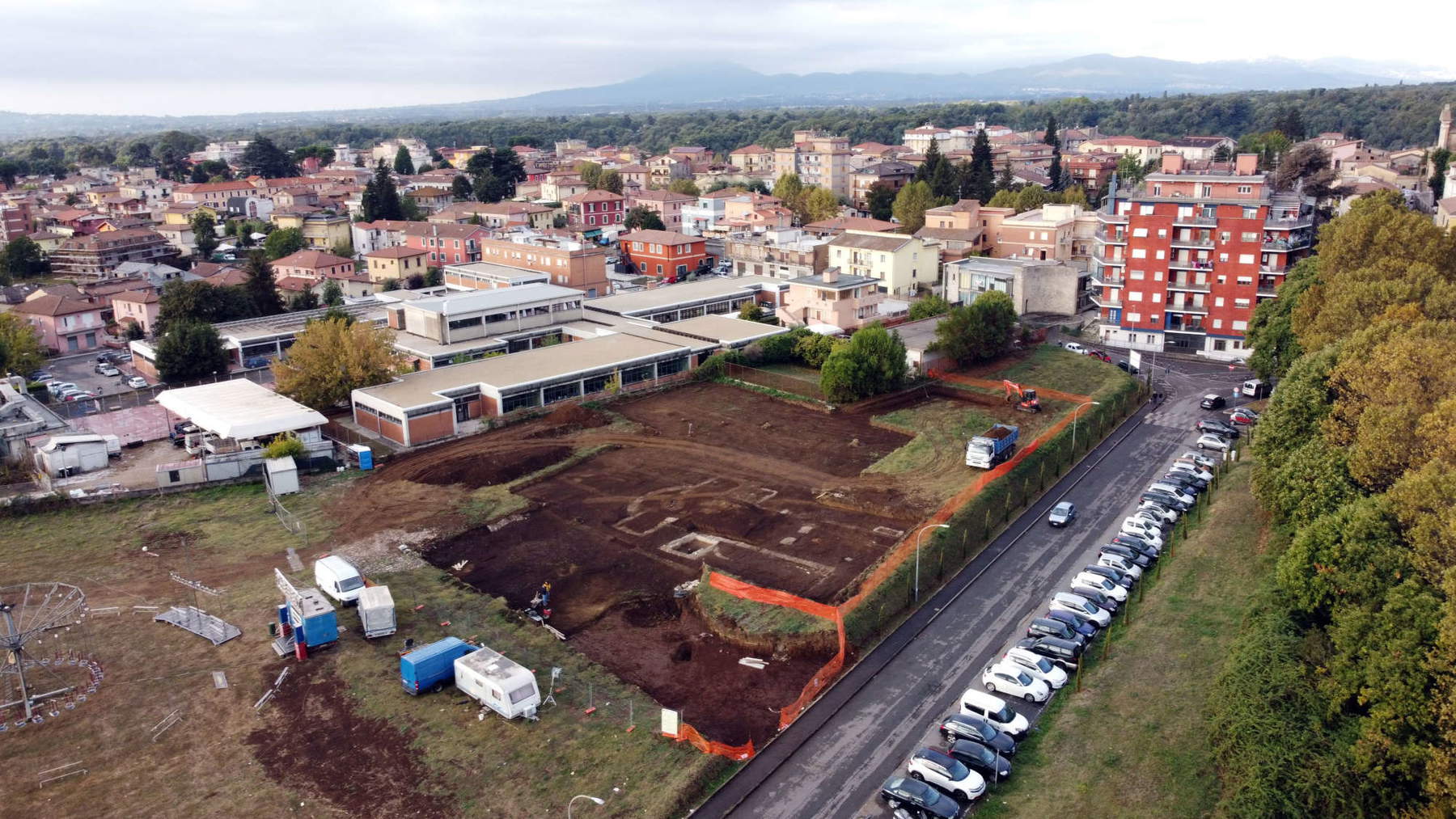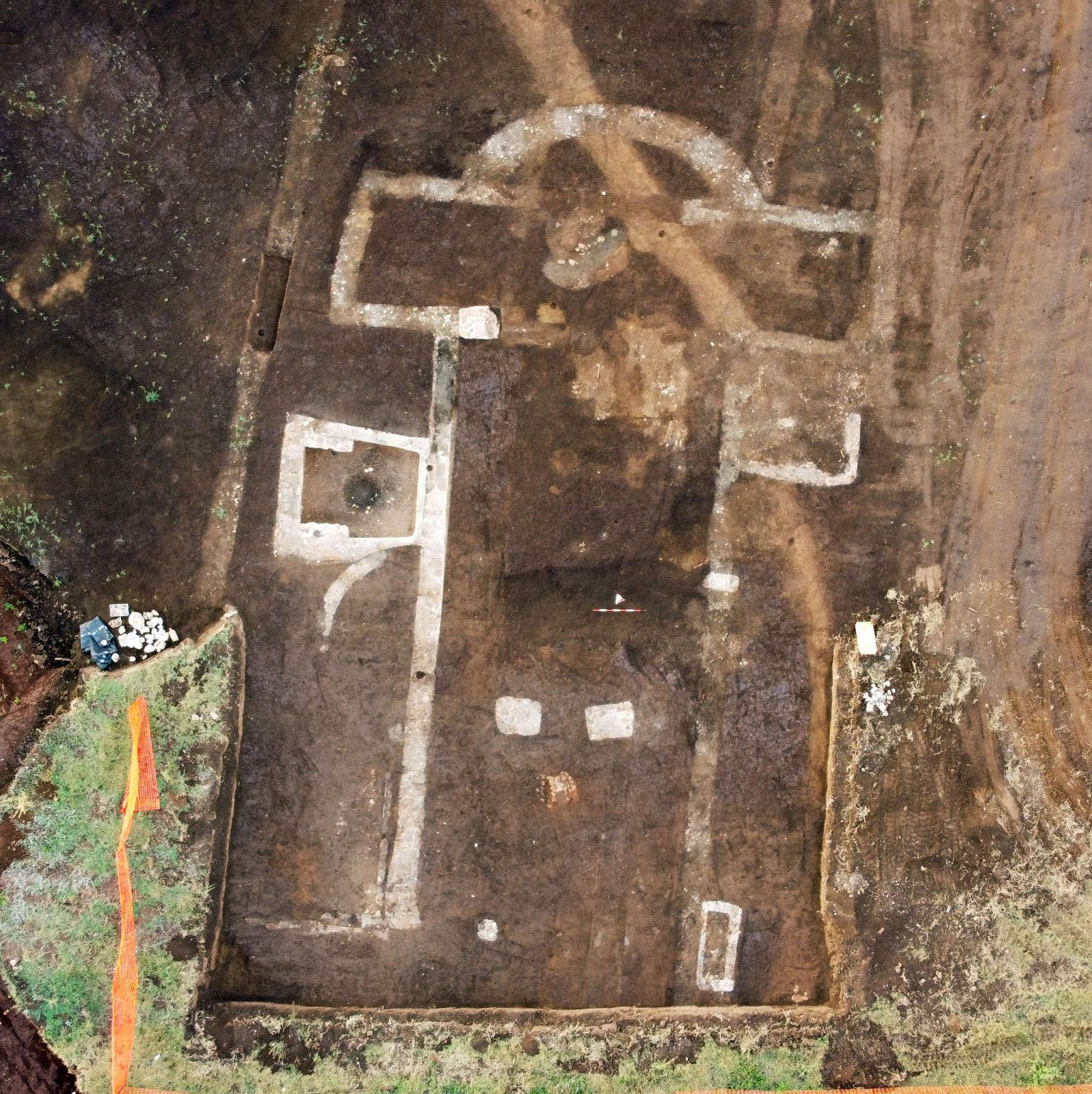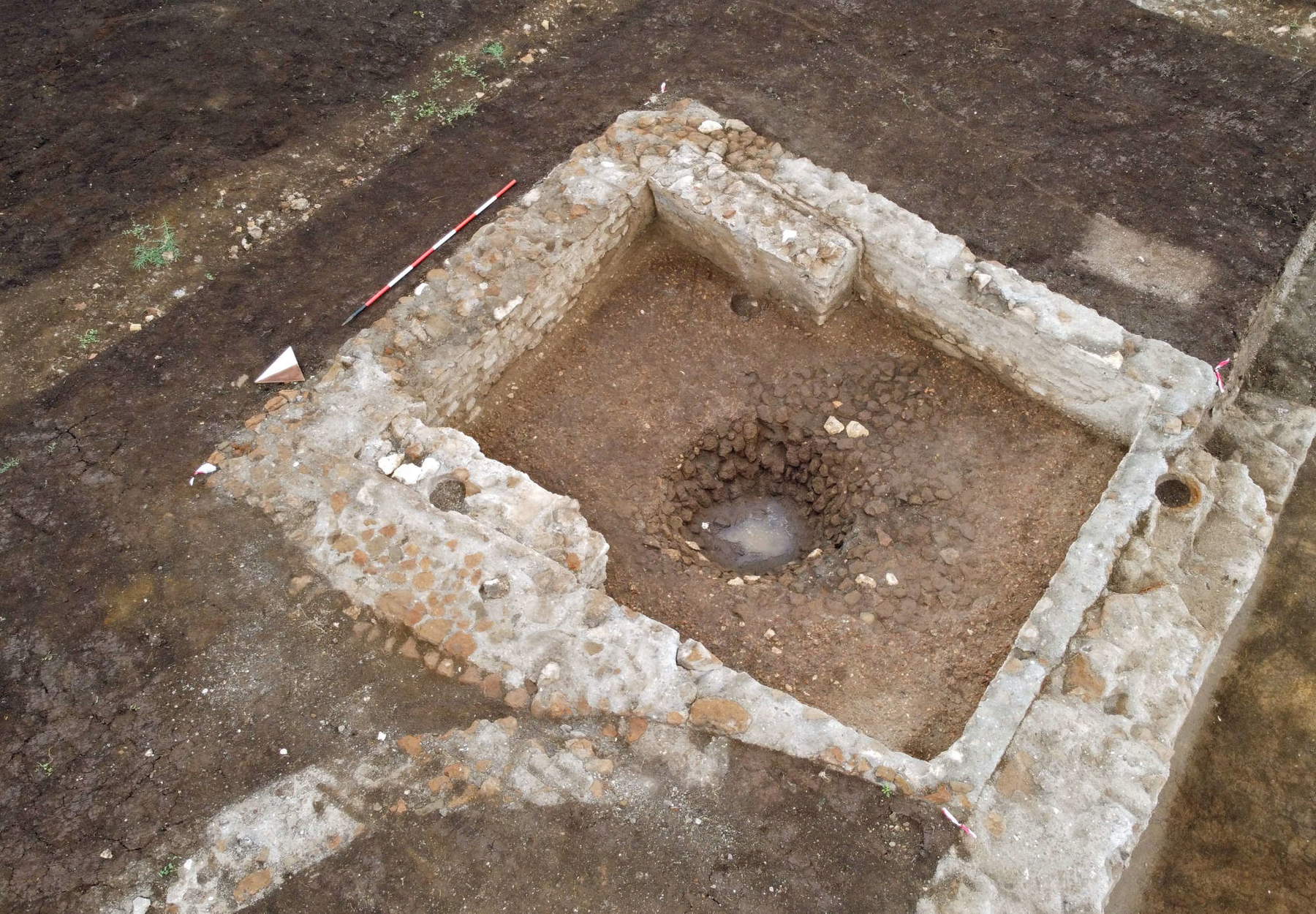In the Roman hills discovered the remains of an ancient church that was turned--into a quarry
An excavation in the municipality of Cave, in the Roman hills not far from Valmontone, has led to the discovery of the remains of anancient Christian church. The excavation had begun during work on some areas to serve the elementary school in the Colle Santo Stefano locality and was conducted by the Soprintendenza Archeologia Belle Arti e Paesaggio for the Metropolitan Area of Rome and the province of Rieti, under the direction of archaeologist official Gabriella Serio and coordinated in the field by archaeologist Andrea Fiasco. The building found is of significant size, the superintendency points out, and the remains, despite being compromised by the spoliation the building has undergone over the centuries, leave no doubt that it was indeed a church.
The building of worship has a Latin cross plan with a single nave, oriented north-south, favorably positioned in the hilly area, in the eastern sector of today’s urban settlement, close to the extension of the ancient Via Prenestina in the direction of the territory of Genazzano. Inside was found a basin that was used for the baptism of the faithful (catechumens), according to the ancient rite of immersion: it is defined as a valuable work, and is in an excellent state of preservation. Also found at the site were ceramic artifacts including some intact forms of 14th-century archaic majolica. Also resurfaced in the same area is a Roman-era road layout in the forms of a glareata road, and widespread burial activity, referable to both the medieval and Roman periods, including a female tomb in a lithic tufa case with grave goods typical of the funerary tradition of the Prenestine area, dating to the mid-Republican period (late 4th to early 3rd B.C.).
 The
The The site of the church of Santo Stefano in
The site of the church of Santo Stefano in The site of the
The site of theThese traces have led experts from the Superintendence to formulate the hypothesis that the building found is the primitive church of St. Stephen, one of the oldest places of worship in the territory of Cave, attested from the 8th century AD. Initially among the possessions of the nuns of San Ciriaco di Santa Maria in via Lata, from the second half of the 14th century the church assumed a central role in the politics of the Annibaldi family, as we know from historical sources: Mascia Annibaldi, wife of Giordano Colonna, brother of Pope Martin V Colonna, in 1385 entrusted the church to the care of the Augustinian Fathers, built the family chapel there and established a chapter of canons, thus elevating it to the rank of collegiate church. Despite this, the building from 1428 ended up involved in the new urban development projects that the pontiff planned for “his” new fiefdom of Cave, bequeathed to him precisely by his sister-in-law Mascia: with a papal bull, the pope authorized the Augustinian Fathers to build a new church within the walls of the village (still existing today under 18th-century reconstruction), on which the ancient title dedicated to the protomartyr Stephen was thus transferred. This choice condemned the old rural parish to oblivion, and it was subjected to systematic dismantling. As happened to so many buildings of the past, the stones of the church were in fact reused for other purposes: de facto, the church was transformed into a quarry for the extraction of building materials, perhaps the “cava Sancti Stephani” mentioned in documents as early as 1436.
The archaeological investigations, which are still ongoing, are being carried out as part of a project conducted by Astral SpA and the Municipality of Cave, directed by architect Francesca De Grandis and engineer Fabio Corti, under the supervision of the Municipal Administration chaired by Mayor Angelo Lupi, with the support and coordination of Public Works Councillor Giulio Beltramme and Culture Councillor Silvia Baroni. The continuation of the work will make it possible to study an appropriate enhancement of the important archaeological site that has come to light, which will be included within the new public works and returned to the city community.
 |
| In the Roman hills discovered the remains of an ancient church that was turned--into a quarry |
Warning: the translation into English of the original Italian article was created using automatic tools. We undertake to review all articles, but we do not guarantee the total absence of inaccuracies in the translation due to the program. You can find the original by clicking on the ITA button. If you find any mistake,please contact us.



























